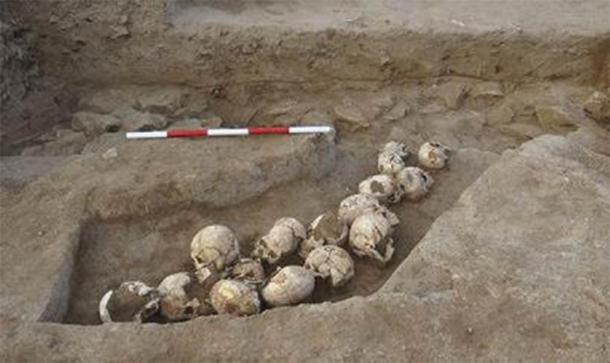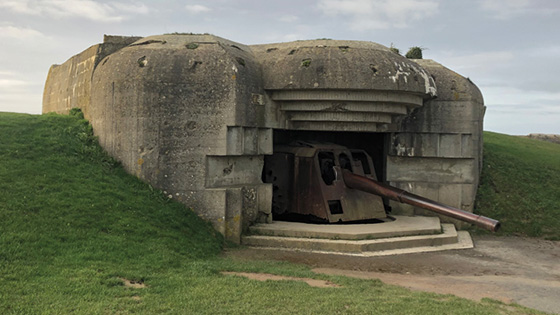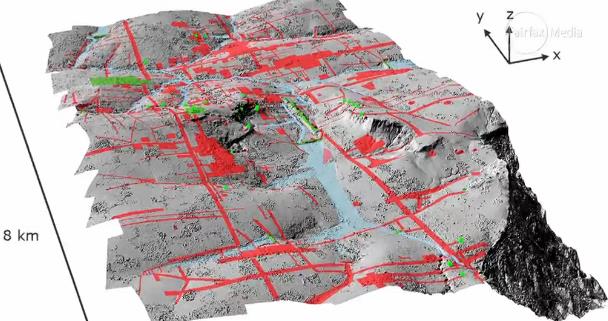A 2,200-year-old inscription discovered in Southern India
In unveiling the forgotten but glorious history of India’s Telangana state which was a part of Asmaka Mahajanapada, the predecessor to an Empire, researchers found an inscription on a rock in Maltumeda village in Nagireddipet Mandal in Kamareddy district written in Ashokan Brahmi script from the 2nd century BC.
This is believed to be older than Dulikatta, Kotilingala, and other inscriptions, which belong to 1st century AD.
A team, comprising MA Srinivasan, a research scholar from Osmania University working on Buddhist archaeology in Telangana, Y Bhanu Murthy, former chief caretaker, Telangana Heritage Department, and B Shankar Reddy, an avid enthusiast of archaeology and surveyor by profession, discovered a label inscription (minor inscription) consisting of five letters in Brahmi script and Prakrit, the language of that period in the village.

The inscription, ‘Madhavachanda’, is on a big boulder on a small hillock on the south of the village, around 500 meters away from the Manjeera river. It was read and certified by the Director, Epigraphy, at the Archeological Survey of India (ASI) in Mysore confirming that the latest finding could be the earliest inscription in Telangana to date.
Another significant aspect is that this strengthens the significance of archaeological sites like Bodhan and Kondapur, which are on the Manjeera-Godavari valley, through which the genesis and growth of the Satavahana Empire can be traced.
Mid-Godavari – The cradle of Telangana’s civilization
“Telangana is a part of Asmaka Mahajanapada that spread from north to south of Telangana, with mid-Godavari as its core area.
We have recorded evidence that kingdoms and civilizations flourished in those times from Asmaka Mahajanapada,” Srinivasan told ‘Telangana Today’. He pointed that no one bothered about the antiquity of Telangana after its merger with Andhra Pradesh and for decades, the concentration was more on Amaravati and Andhra Pradesh.
Rewriting of the Telangana history started only during the last one or two decades. Many researchers wrote about many areas and a lot of evidence was brought out, he added.
The team, which was scouting for early historic sites of ancient Telangana in the Manjeera valley, came to know that there were rock paintings in Maltummeda.
“This confirmed that there were habitations since the Neolithic period in that area. We hoped that we might find evidence of the Satavahana period such as bricks,” he said.
“Shankar Reddy found the rock inscription and informed us. We cleaned it suspecting that someone in the recent past may have made that carving on the rock.
We realized that there were five letters. We took the photographs and sent it to the ASI in Mysore and they confirmed that it was a 2nd century BC inscription,” Y Bhanu Murthy added. The team of enthusiasts frequently visited another site in Demikalam, 10 km from Maltummeda, where there is a cave temple.
What is more significant is that the ASI in Mysore has confirmed that the inscription was 2nd century Brahmi, Ashokan Brahmi to be more specific.
This is Brahmi of Ashoka times and the style is similar to that of rock carvings of Ashoka times. “We don’t understand much of what the inscription is trying to convey. Is Madhavachanda a name of a person or a location? Which religion did he belong to? Or is he saying it is my hillock? We don’t know, we must also search literary text to understand the context of Madhavachanda.
Definitely, it was the early Satavahana period. Satavahanas ruled between 220 BC and 225 AD for nearly 445 years.
The team members said the ASI must take care of the site to protect and estampage the inscriptions to make a replica of it to preserve and publish it. They hoped that the ASI would build a shed or fencing to protect the inscription from direct contact of visitors.






























